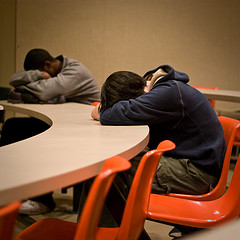
What does it mean to take ownership of your own learning?
What is the role of the course instructor in the learning process?
What is the role of peer assessment in the learning process?
The modern world often puts us in situations when we need to be self-dependent because everyone has their own problems and things to do. We quickly learn that actually nobody but we are interested in our success and life in general. Of course, our parents want to help us, too – though they often do not know how to do it (for example, many fathers believe, that simply paying for education is enough) or we do not know how to accept their help (or even do not want to – we prefer to procrastinate, hang out with our friends and believe that one day the knowledge we need will pop up in our heads itself). So, taking ownership of your own learning is 1) understanding that you are the one who needs to learn and you are the only interested person; 2) taking initiatives for learning and getting new knowledge without waiting for any guidance and control; 3) managing your time and controlling your learning process.
Passive learning is a traditional way of learning, mostly used in schools. It is teacher-oriented and students are not consistently engaged in using cognitive skills because it is usually only a one-way communication where students need to wait for the information given from their instructors. The disadvantage of this type of learning is the fact, that students often cannot use the knowledge they received. Active learning usually means usage of materials other than received during lectures – reading additional literature, watching educational videos, and so on. Students actively discover new information and apply it, not just listen to their instructor. It helps not only to get more knowledge but also to remember things better. It is important to remember that the best way of learning is always a mix of passive and active learning that helps to achieve better results.
Our instructors play the role of guides in the process of learning. They design our courses, plan in-class activities and assignments, make a list of materials we should study according to the course, and review our assignments. They also consult us if we have any questions which is a very important thing for understanding the topic. This is not only helpful but also connects students and instructors, creating a positive classroom atmosphere and making the class more interactive. Peer assessment, at the same time, connects students with other students, letting them learn from each other and share ideas. It teaches us how to analyze the works of others and evaluate them; peer assessment helps to learn how to give constructive and, at the same time, polite feedback. Instructors, at the same time, control this process and make sure that everything is fair – if anything is wrong, they give us directions.
References
Briggs, S. (2015, May 3). 20 steps towards more self-directed learning. informED. Retrieved from https://www.opencolleges.edu.au/informed/features/29-steps-toward-more-self-directed-learning/
College success. (2015). Retrieved from http://open.lib.umn.edu/collegesuccess/
NWIACOMMCOLLEGE. (2011, February 8). What is Active Learning? Retrieved from https://www.youtube.com/watch?v=UsDI6hDx5uI
The Audiopedia. (2017, May 8). What is PASSIVE LEARNING? What does PASSIVE LEARNING mean? PASSIVE LEARNING meaning. Retrieved from https://www.youtube.com/watch?v=JVn3-M5neNY
